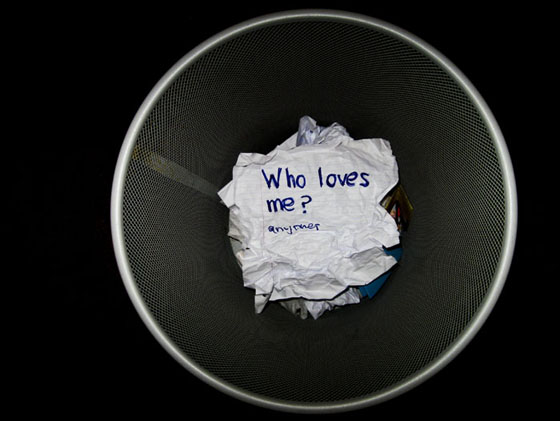 Taylor was adopted as an infant. Her birth parents were not able to sustain a nurturing environment for a young child because they were “children” themselves. Her mother, Sara, was only sixteen when she gave birth to baby Taylor, and was not able to take care of her lovely daughter at the time. Sara and her boyfriend Greg chose to have their daughter adopted by a married couple, Dana and Matt, who were much older than them, and ready for a family.
Taylor was adopted as an infant. Her birth parents were not able to sustain a nurturing environment for a young child because they were “children” themselves. Her mother, Sara, was only sixteen when she gave birth to baby Taylor, and was not able to take care of her lovely daughter at the time. Sara and her boyfriend Greg chose to have their daughter adopted by a married couple, Dana and Matt, who were much older than them, and ready for a family.
Her new parents, Dana and Matt, were thrilled to have a child of their own and later adopted another baby girl named Erica who is two years younger than Taylor. But growing up in a household where you know none of your family is genetically related to you can be somewhat of a struggle. Taylor was always allowed to visit her birth parents but she constantly wondered why they couldn’t have kept her if they went along and had two more children after her and kept both of them. Why? That was one of the questions Taylor would ask herself. She loved her adoptive mother, Dana, but wanted to know more about where her loyalties to a “family” should lie. Do they belong with her genetic parents? Or with the people who raise her?
 Taylor looks in the mirror and sees dark brown eyes, light brown hair, and tan skin. Her adoptive sister Erica has pale skin with blue eyes and light blond hair and her adoptive mother and father are equally as different. Different skin tones, different eyes, different body types, nothing about her family’s appearance were relatable to Taylor’s own appearance at all. Taylor looks almost identical to her birth sister and brother and so much alike her mother and father. They all share deep set brown eyes, tan skin, and a very similar face shape. All of her family have similar body characteristics, so her birth mom, Sara, would be more of the one to give her clothing and personal advice with how to do their specific type of hair or make-up than her adoptive mom right? They could physically relate to each other, and her birth mom would have gone through all the same physical things that Taylor is as she’s growing up. But Dana is supposed to her mother, the one who gives her advice, and that’s where some of the confusion starts, and things contradict.
Taylor looks in the mirror and sees dark brown eyes, light brown hair, and tan skin. Her adoptive sister Erica has pale skin with blue eyes and light blond hair and her adoptive mother and father are equally as different. Different skin tones, different eyes, different body types, nothing about her family’s appearance were relatable to Taylor’s own appearance at all. Taylor looks almost identical to her birth sister and brother and so much alike her mother and father. They all share deep set brown eyes, tan skin, and a very similar face shape. All of her family have similar body characteristics, so her birth mom, Sara, would be more of the one to give her clothing and personal advice with how to do their specific type of hair or make-up than her adoptive mom right? They could physically relate to each other, and her birth mom would have gone through all the same physical things that Taylor is as she’s growing up. But Dana is supposed to her mother, the one who gives her advice, and that’s where some of the confusion starts, and things contradict.

Taylor could feel all alone. She had a family that gave her up, and a family that’s nothing like her, who all have different genetic traits. When she spends time with her birth family, she feels like a part of them, same genetic attitude and humor, same appearance, yet she is not. If she doesn’t fully belong with any family, then who does she belong with? Who really cares for her?
But because she was adopted, that means someone did initially care about her. Her adoptive parents love her and treat her like a real daughter and took the initiative to adopt her as a baby, even though they had no idea who she was going to be and how she would act. Taylor’s birth parents love her too, and that’s why they chose what was best for her. But when Taylor tells them she sometimes feels like they are more her real parent than her adoptive parents because of their genetic link to each other, they reassure her she is loved by them always and will always be thought of as family, but they say “Your “real” parents are the people who raise, love , and discipline you. They are the ones you think of when you’re sick, when you’re in trouble. When you truly need something, when you’re sad, you go to them”.
 So, Taylor could think she has no real family because of her adoption situation, but does she? Taylor could look at it as having more of a family than most people because of her four parents who all agree on the same thing; they love her, they want the absolute best for her, and the truly care for her.
So, Taylor could think she has no real family because of her adoption situation, but does she? Taylor could look at it as having more of a family than most people because of her four parents who all agree on the same thing; they love her, they want the absolute best for her, and the truly care for her.

Essay and Images MELAINE MERRYMAN
Pingback: New Assignment: Personal Essay / Photo Journalism With FOUR Photos | Strong Photography